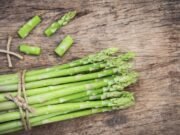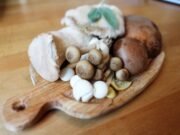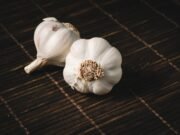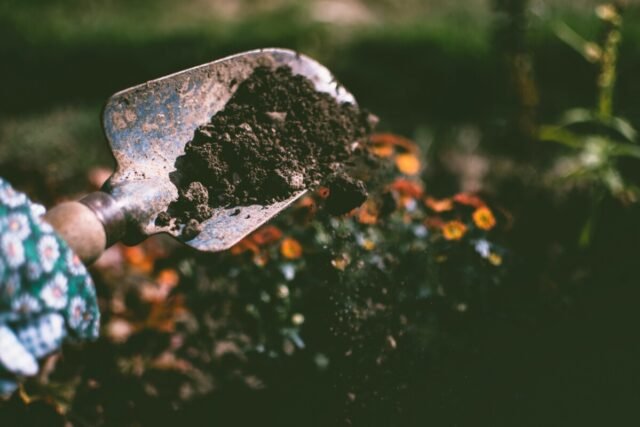Starting a garden for the first time can seem like an intimidating task, but with a bit of planning and preparation, even novice gardeners can cultivate a thriving, productive outdoor space. Follow these gardening tips for beginners to get your green thumb growing in no time.
Embark on Your Gardening Journey: Setting the Stage for Success
Gardening begins with dreaming and planning. Before you start digging in the dirt, take some time to consider the basics – from choosing the perfect location to understanding your soil’s needs. With the right groundwork, you’ll set your garden up for success from the very start.
Choosing the Perfect Location: Unearthing the Ideal Spot for Your Garden
When scouting locations for your first garden, look for a spot that receives at least 6 hours of direct sunlight daily. Vegetables, herbs, and flowering plants all need sufficient sunlight to grow and produce. South-facing areas often provide the best exposure.
Make sure your garden site has access to a water source for irrigation. Situating your garden bed near a hose bib or spigot will make watering simple. If needed, use soaker hoses or drip irrigation to bring water to garden beds located further from a water source.
Consider proximity to your house when selecting a site. Having your garden close by makes tending to it easier. A location visible from inside will allow you to keep an eye on your plants’ progress.
Understanding Soil Basics: Assessing Your Soil’s Composition and Nutrient Needs
The quality of your soil significantly impacts how well plants will grow. Before planting, learn about your native soil structure and pH. Soil tests through your local extension service can provide valuable information to guide amendments.
In general, most plants thrive in loamy, well-draining soil with a neutral pH around 7.0. Clay soils often need organic matter like compost worked in to improve texture. Sandy soils may require water-retentive amendments.
Based on your soil test results, add amendments like compost, manure, or peat moss to enrich the soil. Target a soil depth of at least 8-12 inches for adequate root development in garden beds. Thoroughly mix amendments into the top several inches of native soil.
Selecting the Right Plants: Matching Plants to Your Climate and Preferences
One of the joys of gardening is choosing which plants to cultivate. Consider your local growing conditions, available space, and how you want to use your harvest when selecting plants.
Choose vegetable varieties suited to your climate’s growing season. Check seed packets for maturity dates and plant according to your region’s last frost dates. Opt for heat-tolerant varieties if summers are extremely hot.
Select herbs and flowers that reflect your personal preferences – try basils for pesto, zinnias for cut flowers, or cherry tomatoes for salads. For variety, plant a mix of annuals (one season) and perennials (return each year).
Match plants to your site’s sunlight, soil, and drainage. Place sun-lovers like tomatoes in the brightest beds. Shade-tolerant plants like hostas thrive under trees. Check tags for water and soil needs.
Cultivating Easy-to-Grow Plants: A Beginner’s Delight
Starting with easy-to-grow plants boosts beginners’ confidence while also producing quick results. Herbs, vegetables, and flowers suited for garden novices provide early success and inspiration to continue growing.
Herbs: Mint, Basil, and Chives – Culinary Companions for Your Garden
Many popular culinary herbs happen to be great choices for starter gardens. Their versatility, productivity, and forgiving nature make herbs ideal for beginners.
Mint spreads vigorously, making it incredibly easy to grow – just be sure to contain its growth. Its refreshing flavor enhances drinks, desserts, and more. Plant mints in partial shade for best results.
Genovese basil produces abundant leaves perfect for homemade pesto. Pinch off flower buds to keep leaves growing. Site basil in full sun and provide regular water.
Chives send up round after round of grassy leaves that lend mild onion flavor to dishes. Snip leaves as needed. Chives grow well in containers too!
Vegetables: Lettuce, Tomatoes, and Peppers – Nourishing Additions to Your Table
Satisfy your appetite for homegrown produce with a harvest of lettuce, tomatoes, and peppers from your starter vegetable garden.
Looseleaf and oakleaf lettuce varieties thrive in spring and fall, while heat-tolerant romaine tolerates summer warmth. Sow seeds directly in garden beds.
Cherry and grape tomatoes offer prolific fruit on compact vines. Stake plants and prune suckers to keep them tidy. Full sun and regular water keeps tomatoes happy.
Bell peppers produce crunchy, sweet fruits in an array of colors. Sow indoors and transplant seedlings after frost danger passes. Peppers need warm soil and full sun.
Flowers: Marigolds, Sunflowers, and Zinnias – Vibrant Blooms for a Colorful Display
No garden is complete without flowers! Choose easy-to-grow annuals like marigolds, sunflowers, and zinnias to add vibrant color from spring until frost.
Marigolds bloom brightly all season with little fuss. Plant in full sun nearly anywhere – beds, borders, containers. Deadhead spent flowers for more blooms.
Towering sunflowers with cheerful faces follow the sun across the sky. Sow seeds directly in garden beds after the last spring frost. Provide support for heavy flower heads.
Brilliant zinnias light up gardens in every hue. Sow seeds outdoors after danger of frost, or start earlier indoors. Deadhead to prolong bloom time.
Flower Gardening: Unveiling the Secrets of Floral Splendor
Flower gardening brings beauty, joy, and imagination to your landscape. Follow these tips to plan, plant, and maintain showstopping flower gardens that flourish from season to season.
Planning and Design: Creating a Harmonious Arrangement of Colors and Textures
A thoughtfully planned flower garden pleases the eye by combining colors, heights, and textures in pleasing, cohesive arrangements.
Group plants with similar needs together – full sun lovers, shade dwellers, heavy feeders, drought tolerant, etc. This makes care easier.
Balance bold plants like tall sunflowers with lower-growing borders of marigolds and creeping thyme. Repeat colors to unify the design.
Contrast fine, ferny foliage like asparagus ferns with broad, bold leaves like hostas. Mixing textures adds visual interest.
Planting Techniques: Ensuring Your Flowers Flourish from Seed to Bloom
Proper planting gives flowers the healthy start they need to grow vigorously and produce waves of gorgeous blooms.
Prepare soil by mixing in several inches of compost or other organic matter to improve drainage and nutrition. Rake beds smooth before planting.
Sow large seeds directly in prepared garden beds once danger of frost has passed. Or start indoors 4-6 weeks before last frost date.
Space transplants according to mature plant size. Set out when soil is warm, hardening off first. Water new transplants daily for a week.
Care and Maintenance: Nurturing Your Blossoms for a Season of Beauty
Keep your flowers looking their best all season long with proper care and maintenance. Set your garden up for ongoing success.
Water thoroughly after planting and then regularly throughout growth. Established plants need about 1 inch of water per week.
Apply a balanced fertilizer monthly or according to package directions to fuel growth and flowering. Compost and manure also feed plants.
Deadhead spent blooms by pinching or cutting off faded flowers. This encourages further flowering on many plants.
Monitor for pests like aphids, mites, and caterpillars. Remove by hand or use insecticidal soap sprays. Prevent disease with good air circulation.
Herb Gardening: Culinary Delights from Your Own Backyard
One of the simplest ways for beginners to start gardening is by growing herbs. These aromatic plants are generally unfussy, productive, and immensely useful for seasoning homemade meals.
Choosing the Right Herbs: Selecting Herbs That Suit Your Culinary Preferences
With so many herbs to choose from, gardeners should grow varieties they’ll actually use in the kitchen. Consider how you like to cook.
Basil, oregano, thyme and rosemary are perfect for pizza, pasta, and Mediterranean dishes. Mint and lemon balm lend flavor to drinks, desserts, and teas.
Chives, cilantro, dill, and parsley add fresh flavor to salads, vegetables, eggs, fish and more. Sage brings robust flavor to hearty bean and meat dishes.
Don’t forget medicinal herbs! Chamomile, echinacea, and calendula have soothing properties and beautiful flowers.
Container Gardening for Herbs: Cultivating Herbs in Pots for Convenience and Portability
Herbs happen to thrive in containers, making them the perfect plants for apartment gardeners or anyone short on space.
Choose large pots with drainage holes, using quality potting mix. Add slow-release fertilizer at planting time to feed plants for several months.
Good herb choices for containers include oregano, thyme, sage, basil, parsley, and chives. Mint does well too, but isolate it or it will spread.
Situate containers in a sunny spot. Water whenever soil dries out, taking care not to overwater. Trim plants regularly to encourage bushy growth.
Harvesting and Preserving Herbs: Maximizing the Flavor and Versatility of Your Homegrown Herbs
One of the joys of growing herbs is having their fresh flavor ready to harvest right outside your door. Here are tips for harvesting and preserving that goodness.
Snip leafy herb sprigs as needed once plants are established. Take no more than one-third of the plant at once.
Harvest woody herbs like rosemary and sage by cutting stems just above leaf nodes. Only take a few stems per plant at a time.
Preserve herbs by air-drying, freezing, or steeping in oil or vinegar. Process soon after harvest to maximize flavor.
Store dried herbs in airtight containers out of sunlight. Freeze leaves in ice cube trays with water or oil for longer storage.
Container Gardening: A Garden in Every Corner
Limited on space? Container gardening allows you to cultivate plants on patios, balconies, doorsteps, and anywhere you have sunlight. Follow these tips for success.
Selecting the Right Containers: Choosing Pots That Complement Your Plants and Décor
Almost any type of vessel can be turned into a plant container with proper drainage. Consider size, material, and aesthetics when selecting pots.
Match pot size to the mature plant’s root mass. Bigger is generally better to avoid frequent watering and provide stability.
Use containers with drainage holes or drill your own in the bottom. Elevate pots to improve drainage. Add gravel at the base for extra water flow.
Choose durable materials like plastic, concrete, wood, or terracotta. Paint or stain pots to coordinate with your color scheme.
Growing Vegetables in Containers: Cultivating a Bountiful Harvest from Limited Space
Don’t let small spaces deter you from vegetable gardening. Many veggies thrive in containers with proper care.
Focus on compact varieties of plants like tomatoes, peppers, eggplant, bush beans, lettuce, spinach, carrots, beets, and more.
Use large pots at least 12 inches wide and deep. Fill with a quality potting mix enriched with compost or fertilizer.
Situate containers in full sun. Water when soil dries out, draining excess water. Feed plants monthly with a balanced fertilizer.
Creative Container Gardening Ideas: Vertical Gardening, Herb Spirals, and Miniature Gardens
Make the most of small spaces by gardening vertically, in layers, or on a miniature scale in containers.
Hang trailing tomato plants upside down from balconies in mesh slings. Train vining crops like beans or cucumbers up vertical supports.
Plant an herb spiral with cascading herbs like thyme surrounding upright basils and mints in a coil pot.
Create a fairy garden of miniature plants like succulents, small ferns, and pixie peonies with tiny accessories.
Indoor Gardening: Nurturing Greenery Within Your Home
Bring the benefits of gardening indoors by growing plants that thrive inside your home. Follow these indoor gardening tips for success.
Ideal Indoor Plants: Selecting Low-Maintenance Plants That Thrive Indoors
Certain houseplants are well-adapted to the warm, dry conditions found in most homes. Focus on these easy-care varieties.
Succulents like jade, aloe vera, and echeveria need minimal watering and thrive in bright, sunny windows.
Peace lilies, pothos, philodendrons, and dracaena tolerate low light and humidity, making them perfect beginner plants.
Herbs like basil, oregano, thyme, and rosemary grow well indoors and provide fresh flavor for cooking.
Creating Indoor Conditions: Controlling Light, Temperature, and Humidity for Healthy Plants
While indoor plants are low-maintenance, they still require the right environment tailored to their needs.
Maximize natural light by placing plants on bright, south-facing windowsills or using grow lights. Rotate plants periodically so all sides receive light.
Maintain indoor temperatures between 65-75°F for most houseplants. Keep plants away from hot and cold drafts.
Increase humidity around plants by misting leaves, using a humidifier, or placing pots on pebble trays filled with water.
Pest and Disease Management: Protecting Your Indoor Garden from Common Threats
Indoor plants fall prey to pests like spider mites, mealybugs, and scale. Prevent and control infestations with these tactics.
Isolate new plants and inspect thoroughly before introducing to your existing indoor garden. This prevents pest spread.
Prune off affected leaves and stems. Remove insects by hand or use horticultural soaps and neem oil.
Prevent diseases like botrytis, powdery mildew, and root rot with proper watering, ventilation, and humidity control.
Sustainable Gardening: Cultivating an Eco-Conscious Oasis
Gardening goes hand-in-hand with environmental stewardship. Employ earth-friendly practices to make your garden a haven for you and Mother Nature.
Composting: Transforming Food Scraps into Nutrient-Rich Soil Amendment
Composting turns household and garden waste into “black gold” for your garden beds. Follow these tips for composting success.
Build or purchase a compost bin fitting for your space. Site your compost pile in a shady, convenient area.
Layer nitrogen-rich “greens” like plant debris and food scraps with carbon-rich “browns” like leaves or cardboard.
Turn or stir the compost pile weekly to mix contents and speed decomposition. Moisten if needed.
Finished compost is dark, crumbly, and earthy-smelling. Spread and mix into garden beds to fertilize plants.
Water Conservation Techniques: Efficient Watering Practices for a Sustainable Garden
Wise watering cuts waste while keeping plants healthy. Utilize these methods to get the most from every drop.
Water early in the morning or evening to reduce evaporation loss. Avoid watering during the heat of day.
Install soaker hoses, drip irrigation, or micro-sprayers for slow, targeted watering. Use timers to automate the system.
Let soil dry between waterings; avoid overwatering. Check soil moisture before watering.
Mulch beds to reduce watering needs. Direct downspouts into rain barrels to collect free rainwater.
Natural Pest Control Methods: Utilizing Safe and Effective Alternatives to Chemical Pesticides
Keep your garden thriving without harsh pesticides. Control pests with these safe, eco-friendly strategies instead.
Attract beneficial insects like ladybugs and lacewings with pollen and nectar-rich companion plants. They prey on pests.
Hand pick larger pests like slugs, caterpillars, and beetles. Knock off insects with blasts of water from the hose.
Make natural pesticides by blending ingredients like garlic, hot peppers, and soap. Spot treat affected plants only.
Use row covers as barriers against insects. Remove weeds that harbor pests. Rotate crops to disrupt pest life cycles.
Conclusion: Reaping the Rewards of Your Gardening Adventures
As a beginner gardener, you now have the basic techniques, tips, and inspiration to get growing! Gardening is a lifelong learning experience that brings abundant rewards.
The Joy of Gardening: Celebrating the Beauty, Tranquility, and Satisfaction of Cultivating Your Own Garden
Few things compare to the joy, relaxation, and sense of accomplishment that comes from growing your own garden. Each season brings new delights.
Sharing the Harvest: Gifting or Donating Your Homegrown Produce to Spread the Joy of Gardening
Your bountiful harvest is meant for sharing. Spread the wealth and bring joy to others by gifting or donating your garden’s delicious yields.
Continuous Learning: Embracing the Ever-Evolving World of Gardening with Passion and Curiosity
Gardening has so much to offer over a lifetime. Continue building your skills by taking classes, reading, joining clubs, and simply growing your garden year after year.
Follow these gardening tips for beginners to get started on the right foot. Don’t be afraid to get your hands dirty and make mistakes as you gain experience. The pleasure and taste of homegrown fruits, herbs, and vegetables straight from your own garden makes it all worthwhile. Happy gardening!































